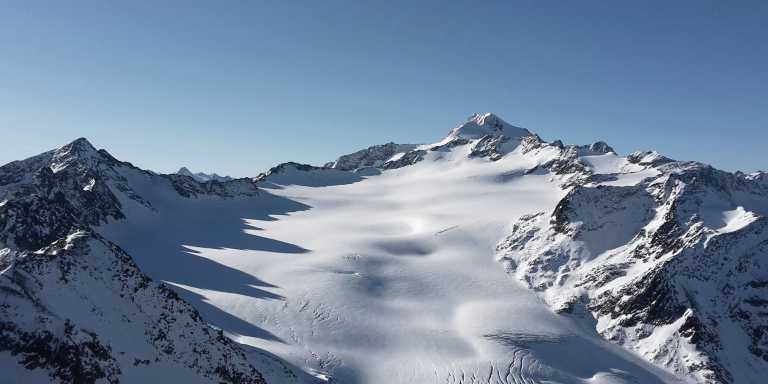
All glaciers are undergoing major changes due to global warming. An interdisciplinary team of glaciologists, climatologists and mathematicians from the University of Grenoble Alpes, INRAE, Météo-France, the Free University of Brussels and TU Delft used for the first time deep artificial neural networks to simulate the future evolution of glaciers in the French Alps. The study was published in the journal Nature Communications.
Glaciers are modified mainly by temperature. Thus, they expanded from the 15th to the 19th century, when winters were colder and began to retreat around the 1850s as the climate warmed. Around the 1950s, the trend was reversed until the 1980s, when the period was colder. Since then, global warming has increased, leading to a rapid and widespread retreat of glaciers, and even their disappearance. The environmental and social impacts are very important: rising sea levels, loss of glacier water resources useful for electricity production, agriculture, industry… To anticipate and mitigate these impacts, it is essential to predict the future evolution of glaciers. Jordi Bolibar, Antoine Rabatel, Isabelle Gouttevin, Harry Zekollari and Clovis Galiez attempted to do so in this study on “Nonlinear sensitivity of glacier mass balance to future climate change revealed by deep learning.”
Glaciers in the French Alps
The study team chose to study the glaciers of the French Alps, which are experiencing one of the most consistent retreats in the world. This rapid retreat of glaciers is already having an environmental impact on natural hazards (dam failure, boulder avalanche…), mountain ecosystems and biodiversity. Glaciers in the region have been observed for several decades, while the evaluation simulation covers the period from 2003 to 2015.
A different approach
In general, numerical models allow scientists to simulate, in a simplified way, the evolution of glaciers for entire regions or for the entire planet, whether for past or future periods. Most of these models use a calibrated linear relationship between positive degree-days and ice or snow melt, whereas glacier evolution is non-linear, i.e. it does not evolve constantly over time.
Deep artificial neural networks are nonlinear models that offer an alternative approach to these classical methods but they are very little used in glaciology for regression problems. For the study, the modeling was based on a deep learning mass balance and glacier-specific parameterizations. According to the researchers:
“deep learning captures a nonlinear response of glaciers to air temperature and precipitation, improving the representation of extreme mass balance rates compared to linear statistical and temperature index models.”
Study results
Projections show a large loss of glacial mass in the French Alps estimated at between 75% and 88% compared to 2015 by the end of the century. The study predicts that glaciers in the Arctic and Patagonia, which are the world’s largest ice reserves after Greenland and Antarctica, would be most impacted by global warming.
Sources: Bolibar, J., Rabatel, A., Gouttevin, I. et al. Non-linear sensitivity of glacier mass balance to future climate change revealed by deep learning. Nat Commun 13, 409 (2022). https://doi.org/10.1038/s41467-022-28033-0.
Translated from Etudier l’évolution des glaciers face au changement climatique grâce à l’Intelligence Artificielle









